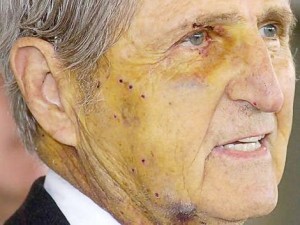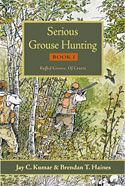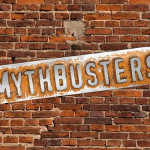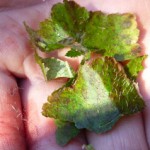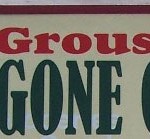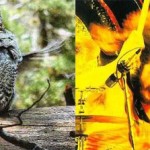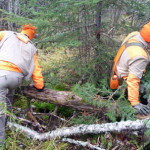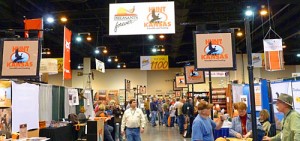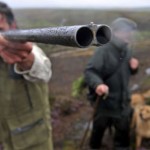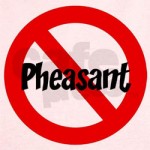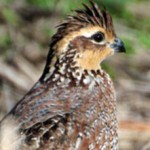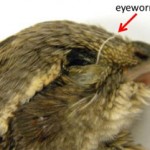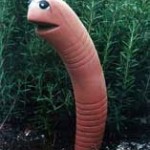New Details About the Cheney Incident
The most famous accident in bird hunting was, of course, when our former VP Dick Cheney blasted an alleged friend of his while quail hunting in Texas, nearly killing the gentleman in the process. Just how serious was the accident? What details abour it are coming out now? And did Cheney ever apologize? For the details, read on.
Here are highlights from a loooooong article in The Washington Post, the occasion for which is it’s been nearly 5 years since “the shooting:”
> Harry Whittington still speaks with a slight flutter in his voice — a “warble,” he calls it, inadvertently choosing a bird metaphor. His easy East Texas drawl changed forever one day in February 2006 when a tiny lead pellet pierced his larynx. It’s still there.
> The eye socket, hairline and hand have birdshot pellets lodged in them, too. If you look closely — and strangers occasionally sidle up to him to do just that — the accident’s remnants are evident; there’s a tiny bump in each spot.
> Every so often, for months afterward, some of the lead in Whittington’s body worked its way to the surface. But many pieces remain too deeply embedded to remove, including one near his heart. At 82, Whittington knows he will live the rest of his days with about 30 pieces of shot inside him. Somehow, he jokes, he can get through a metal detector without causing a commotion.
> Four years ago, Whittington was on a quail hunt, walking in the tall grass of a south Texas ranch, when a fellow hunter wheeled on a winging bird and fired. The shot peppered Whittington in the face, neck and torso. The shooter was Dick Cheney, the vice president of the United States.
> Eyewitnesses, including Cheney, said the shooting was accidental. Whittington doesn’t dispute that, but his memory of the event is limited only to his most immediate sensations. “All I remember was the smell of burning powder,” he says. “And then I passed out.”
> Paramedics rushed the bleeding and unconscious Whittington to a hospital in tiny Kingsville, Tex. Doctors deemed his injuries serious enough to transfer him via helicopter to larger hospital in Corpus Christi, about 40 miles away.
> The shotgun sprayed upward of 200 birdshot pellets at Whittington, causing scores of wounds. His facial lacerations were the most dramatically bloody, but the injuries to his neck and chest were the most serious. Four days after being hit, the birdshot near his heart prompted it to beat erratically, forcing him back into the intensive care unit. Doctors said Whittington suffered a mild heart attack; he thinks it was something less, a heart “event.”
> Still, the injuries were more dire than previously disclosed. Whittington suffered a collapsed lung. He underwent invasive exploratory surgery, as doctors probed his vital organs for signs of damage. The load from Cheney’s gun came close to, but didn’t damage, the carotid artery in his neck. A rupture could have been fatal, particularly since it took the better part of an hour to transport him from the vast Armstrong ranch to the Kingsville hospital.
> [The shooting violated] two basic rules of hunting safety, says Ralph Stuart, the editor of Shooting Sportsman, a hunting magazine. The first is the shooter’s obligation to ensure that he has a clear line of fire before pulling the trigger. The second is the “blue-sky rule,” meaning that a hunter shouldn’t fire until he can see blue sky beneath a bird, thus greatly reducing the chances of hitting another hunter or dog. “Quail often fly low and demand lower shots,” Stuart points out, but that makes it “doubly important” that the shooter is aware of what’s between him and the bird and just beyond.
Still Has the Gear
> “I was lucky,” [Whittington says] today, sitting in his law office in downtown Austin, the same one he has worked in since 1965. “I just feel like every day is a gift. Sometimes I wonder why I got these extra years.”
> “Take a look,” he urges, holding out a baseball cap emblazoned with the name of a hunting resort, and a hunting vest, both in safety orange. The vest has been sliced up the side, as if someone was trying to remove it in a hurry. Its surface is splattered with brownish, irregularly shaped bloodstains.
> Harry Whittington saved the vest not just as a souvenir but as a warning. He shows it to friends, and to the children of friends, to illustrate the dangers of firearms. “It’s an education for them,” he says.
Part 2 on Wednesday

